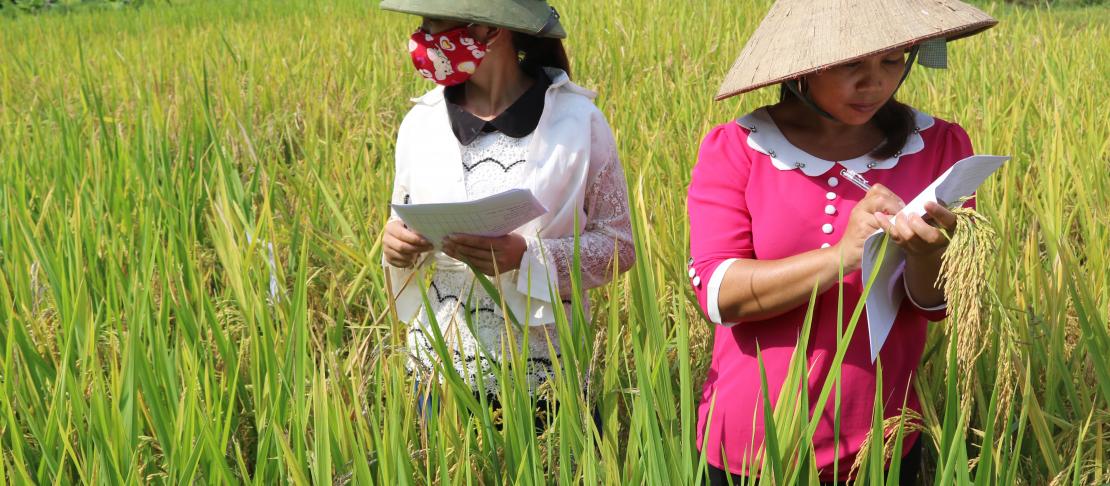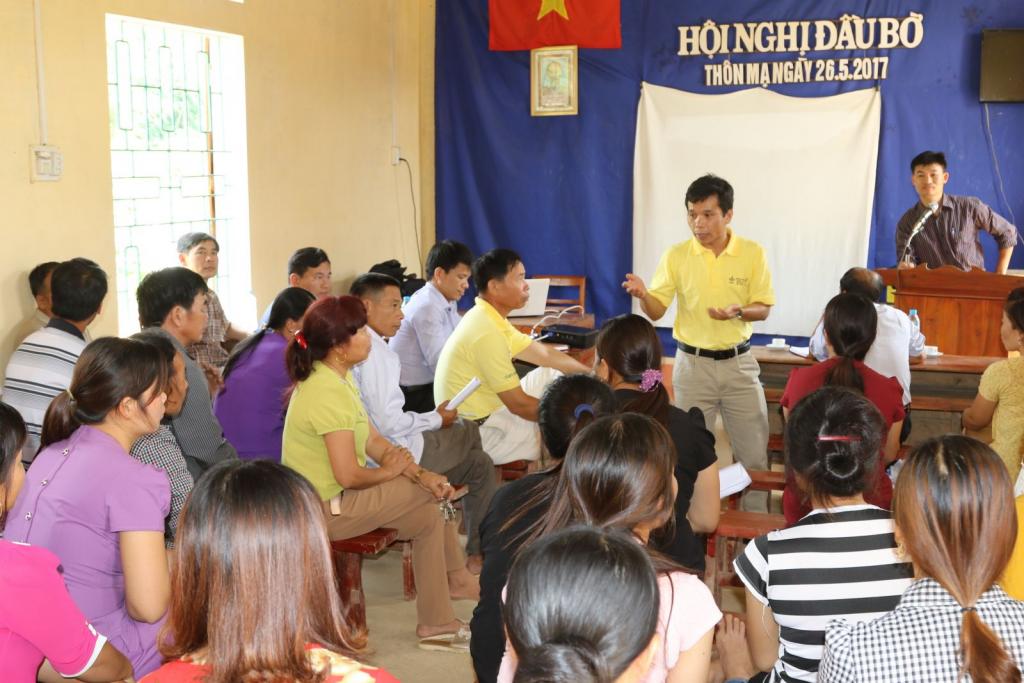Is integrated crop management in Vietnam climate-smart?

Farmers from Ma Climate-Smart Village in Vietnam participate in the evaluation of integrated crop management as a potential climate-smart agriculture practice.
Communities should treat climate change as both a challenge to overcome, as well as an opportunity to improve their livelihoods. However, for that to happen, farmers especially need to adopt “climate-smart” practices that could ensure their productivity and increase their resilience to changes in the climate.
One way to do so is through participatory experiment evaluation, wherein farmers are directly involved in developing, implementing and evaluating an experiment.
How do you know what to do?
The Northern Mountainous Agriculture and Forestry Science Institute (NOMAFSI) tested integrated crop management (ICM) and different rice varieties in the Ma Climate-Smart Village (CSV) of Yen Bai province, Vietnam. NOMAFSI used the participatory experiment evaluation approach, which helped the farmers discuss which practices and varieties would best suit the conditions in the village.
Fifty farmers from the different villages of the Vinh Kien commune joined a field workshop for assessing the ICM practices for rice production and participatory variety selection (PVS) on 25 May 2017. Staff members and officers from the Yen Bai Department of Agriculture and Rural Development, Yen Binh Division of Agriculture and Rural Development and the Vinh Kien Commune People Committee also participated in the activities.
The ICM trial focused on the following practices: use of healthy seedlings and varieties suitable to the local conditions, cultivation of rice in rows with fixed spaces in between, deep placement of fertilizers, and bio-mass recycling. These would reduce the adverse impacts on human health, as well as reduce labor costs related to fertilizer application.
The PQ and VD5 rice varieties were tested in the ICM trials. Developed and provided by the Institute of Asia-Pacific Science and Technology Research and Cooperation (IAP), these two varieties had been included in the PVS trials in 2016. The farmers in Ma evaluated these as “elite” because of their higher yields and tolerance to cold compared to other varieties. In addition, both varieties were also tender and had a nice aroma when cooked.
During the evaluation activity for the participatory variety selection in Ma Climate Smart-Village, Vietnam. Eight different rice varieties were assessed by the farmer participants during the field day. Photo: L. Sebastian (CCAFS SEA)
On the other hand, the farmers have been assessing different rice varieties through the PVS activities. Aside from PQ and VD5, six other rice varieties were evaluated based on their tolerance to cold and drought, and were also compared to the control variety. These were planted on eight different plots on one paddy field. The farmers and researchers from NOMAFSI then scored the varieties according to the listed criteria, based on their field observations.
The ICM trials were conducted under the CGIAR Research Program on Climate Change, Agriculture and Food Security (CCAFS) in Southeast Asia, while the PVS is one of the activities with the Consortium for Unfavorable Rice Environments (CURE).
How did the farmers find the experiment?
Many farmers who participated found ICM an appropriate climate-smart agriculture practice for their area. For them, the biggest benefit of using ICM was the consistency of the rice yield across the fields. ICM does mean, however, that farmers need to spend more time planning and caring for their plots.
Aside from tolerance to cold and drought, the rice varieties planted as part of the PVS trials were evaluated based on their uniformity, grain filling, number of grains per branch, rice quality, taste and smell. One stark difference was the height and apparent vigor of the stress-tolerant varieties, compared to those usually planted by the farmers. This would ensure better crop yields and higher incomes for smallholder farmers. Consumers would also benefit from these tolerant varieties which would be better in quality and nutritional content.
Discussions on the post-harvest processing of rice straw were held after the field evaluations. Farmers usually use herbicide to decompose the remaining rice straw on their fields, however this releases more chemicals into the environment. A biological decomposing agent, on the other hand, would take longer to break down the rice straw, but would also help retain and even build the organic matter in the soil, making it more fertile.
Discussions after the field activities in Ma Climate-Smart Village, Vietnam. These helped determine whether farmers would like to adopt ICM practices. Photo: L. Sebastian (CCAFS SEA)
What happens next?
Of the 50 farmers who participated in the evaluation, 25 expressed their willingness to apply ICM practices for the next planting season.
In conducting the PVS and the ICM trials, the farmers hope to enrich their pool of rice varieties and in time, improve their resilience to climate change and ensure long-term food security.
Through participatory evaluation, farmers from neighboring villages can also learn more about climate-smart agriculture and help in upscaling the practices. Ms Dang Thi Thu, head of Dong Lam village, shared that she will be applying ICM in their own paddy field. She also wants to test the dibbling fertilizer with their winter maize crop.
“I hope that farmers in my village will know more and apply more this technique to help increasing productivity, reducing input cost and help protecting the environment,” said Ms Dang during the activity.
Read more:
- Vietnamese farmers, media share their climate-smart agriculture experiences with Filipino broadcasters
- Farmers, agricultural advisors need more detailed, area-specific climate information for climate-smart farming
- Farmers in Ma Village to lead in outscaling climate-smart agriculture
Amy Cruz is the junior communications specialist for the World Agroforestry Centre Philippines. She is also a communication consultant with the CCAFS SEA program.





